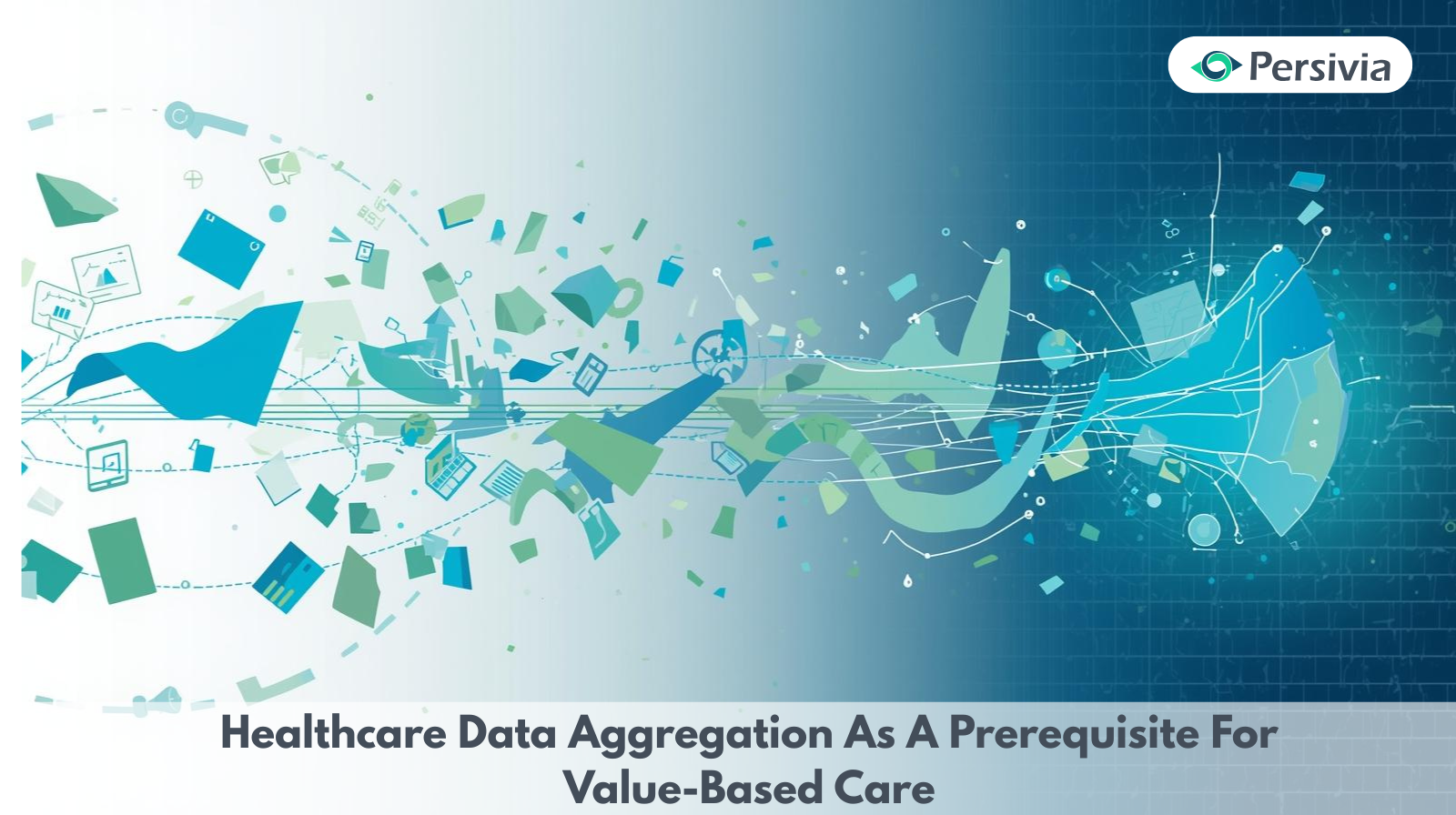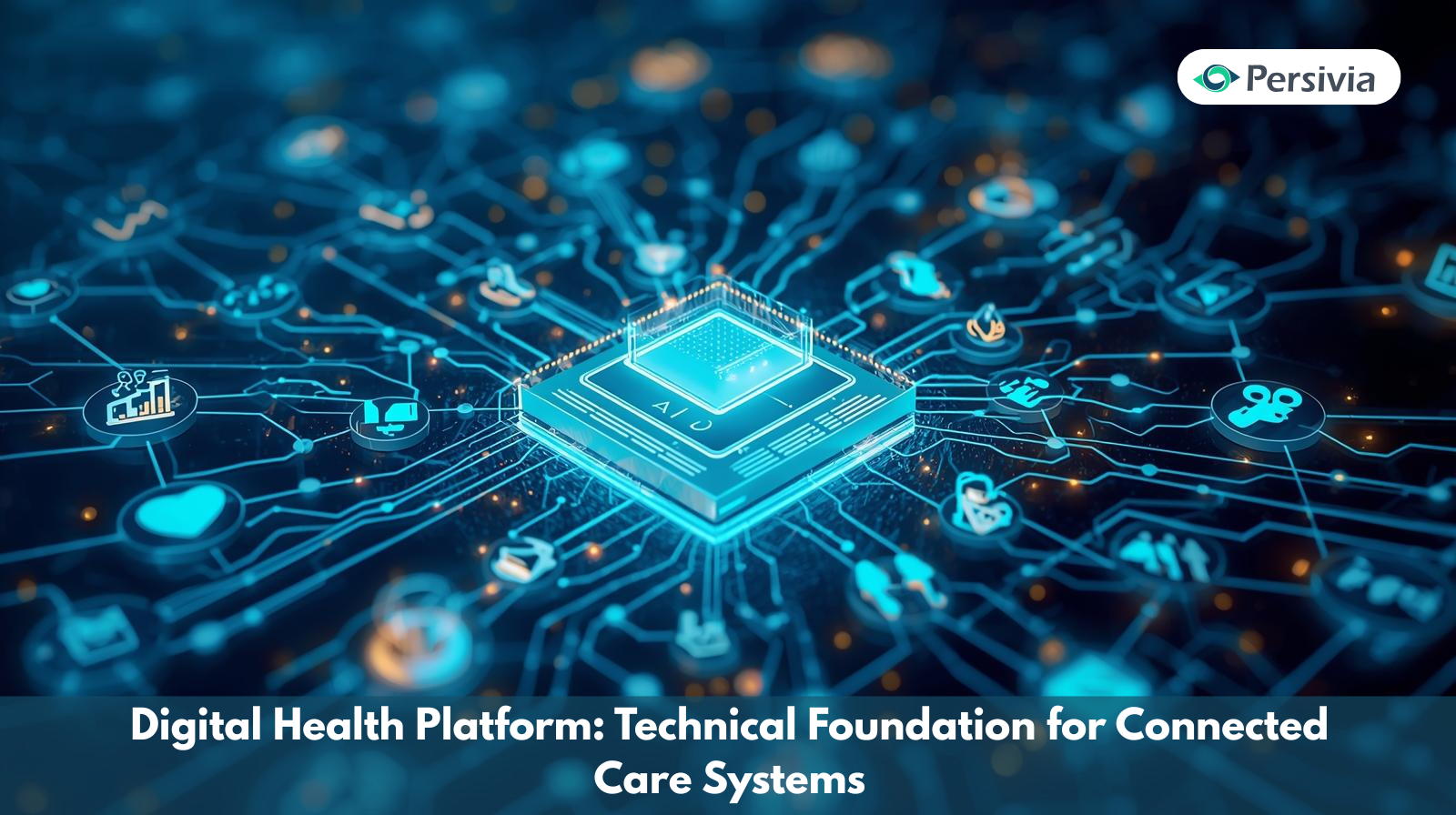Healthcare Data Aggregation restructures the disjointed information on patients into single records, which would allow value-based care to be achieved through enhanced decision-making, lowered costs, and enhanced patient outcomes. Healthcare organizations that aim to succeed in alternative payment models require an inclusive data platform that combines EHR, claims, and device and social determinants data.
The transition to value-based care models requires the fundamental transformation of medical information collection, processing, and use. Healthcare Data Aggregation is the foundational technology that enabled such a transformation by establishing a multidimensional view of patients with information that was formerly found in silos.
The sophistication of the current healthcare system produces an immense volume of data in various systems, devices, and touchpoints. This valuable information is lost in silos without proper aggregation, and this would inhibit clinicians from making informed decisions and measuring the actual patient outcomes. Companies that effectively deploy data aggregation in healthcare plans place themselves in a position of excellence to excel in value-based contracts and offer high-quality patient care.
What Makes Healthcare Data Aggregation Essential?
Healthcare Data Aggregation takes the information about patients from various sources and integrates it into a single and actionable record. It is carried out through gathering EHR data, claims data, medical device data, and patient portal data, as well as external data to generate a complete patient profile.
Contemporary healthcare produces information at record levels. One interaction with a patient can result in data in more than one system – laboratory data in one system and prescription data in the other. Devoid of aggregation, providers operate with partial images whose impact causes inefficient care choices.
The value becomes clear when considering typical healthcare scenarios:
- Emergency physicians accessing complete medication histories during critical moments
- Care coordinators identify patients at risk for readmissions before discharge
- Quality teams tracking population health metrics across entire patient cohorts
- Financial analysts measuring true cost-per-episode across different care settings
Core Components of Effective Data Aggregation
Developing a successful healthcare data aggregation system involves more than simply gathering data. It relies on structured models, real-time processes, and intelligent curation that, in combination, turn raw data into reliable, actionable insights to providers, payers, and patients. These are the fundamental elements of an effective value-based care strategy.
Unified Data Models
Standardized data models are the cornerstone of effective health data aggregation since they normalize data obtained by various sources. These models guarantee the uniformity in data representation irrespective of the system of origin.
Key elements include:
- Standardized patient identifiers across all systems
- Normalized clinical terminology and coding structures
- Consistent data formats for dates, measurements, and observations
- Harmonized medication and procedure classifications
Real-Time Processing Capabilities
Contemporary healthcare requires access to patient information in real time. Aggregation platforms facilitate both batch and real-time processing to address the diverse clinical workflow requirements.
Real-time processing enables:
- Instant alerts for critical lab values or medication interactions
- Live updates to patient records during active care episodes
- Immediate risk stratification as new data becomes available
- Dynamic care plan adjustments based on changing patient conditions
Advanced Data Curation
Raw healthcare data needs advanced processing to become a clinically useful asset. Advanced curation is based on natural language processing, semantic normalization, and smart data matching.
The curation process converts unstructured clinical notes into structured and searchable data whilst maintaining the quality and consistency of data across all sources.
How Data Aggregation Enables Value-Based Care Success
The patient information must be both accurate and complete to allow transitioning to value-based care. Data aggregation fills gaps between fragmented records and provides healthcare organizations with the power to cut costs, boost outcomes, and improve patient experiences. The unification of data offers providers the clarity necessary to control populations and succeed in value-based contracts.
Risk Stratification and Population Management
Population health management and correct patient risk assessment are necessary in value-based care contracts. Aggregated data gives an in-depth picture to enable effective risk stratification.
A healthcare data platform enables organizations to:
- Identify high-risk patients before costly episodes occur
- Segment populations based on clinical and social risk factors
- Track patient journeys across different care settings
- Measure intervention effectiveness at the population level
Cost and Utilization Analytics
To know the real healthcare costs, one needs to see throughout the care continuum. Aggregated information displays the trends in spending, trends in utilization, and chances of cost savings.
Analytics capabilities include:
- Episode-based cost tracking across multiple providers
- Identification of unnecessary procedures or duplicate testing
- Prediction of future healthcare utilization based on patient characteristics
- Benchmarking against similar patient populations
Care Coordination Enhancement
The presence of shared information access between different providers and care settings is essential to effective care coordination. Aggregated patient records remove the gaps in information that contribute to fragmented care.
Improved coordination results in:
- Reduced duplicate testing and procedures
- Better medication management across multiple prescribers
- Seamless transitions between care settings
- Enhanced communication among care team members
Technical Architecture Requirements
Modern healthcare data environments require a strong technical foundation to process massive volumes of information. The appropriate architecture guarantees scalability, interoperability, and precision of the delivery of insights in any care setting.
Data Lake House Technology
Data aggregation platforms are modernized to use data lake house architectures that integrate the flexibility of data lakes and the optimization of data warehouses in terms of performance. The hybrid strategy provides structured and unstructured data on healthcare and retains query performance.
Benefits of lake house architecture:
- Storage flexibility for diverse healthcare data types
- Scalable processing capabilities for growing data volumes
- Cost-effective long-term data retention
- Support for both analytical and operational workloads
Machine Learning Integration
AI and machine learning convert aggregated data into predictive insights. These technologies can identify trends in patient data that would not be recognized by people.
Machine learning applications include:
- Predictive modeling for patient deterioration or readmission risk
- Automated clinical decision support recommendations
- Pattern recognition for population health trends
- Intelligent care gap identification and closure
Enterprise Master Patient Index (eMPI)
Patient matching between the various data sources is only possible with advanced eMPI technology. This makes sure that all information about the patient is properly attached to the correct personal record.
eMPI capabilities address:
- Duplicate patient records across systems
- Name variations and data entry inconsistencies
- Patient identification across different healthcare organizations
- Maintenance of patient privacy and data security
Implementation Challenges and Solutions
Developing a robust healthcare data collection and aggregation system does not come with ease. To achieve successful, secure, and meaningful data integration, organizations have to conquer technical, operational, and regulatory issues.
Data Quality and Standardization
The quality of data is a consistent issue that healthcare organizations face in various systems. The process of aggregation needs to be effective, and this means that data cleansing and standardization of data must be robust.
Common quality issues include:
- Missing or incomplete patient information
- Inconsistent coding standards between systems
- Outdated or incorrect contact information
- Duplicate records with conflicting data
Solutions involve automated data validation, standardization algorithms, and ongoing quality monitoring processes.
Integration Complexity
IT healthcare settings are usually characterized by several old systems that have diverse data structures and communication standards. Effective aggregation involves elastic integration.
Integration challenges:
- Legacy systems with limited API availability
- Different data exchange standards (HL7, FHIR, etc.)
- Real-time versus batch processing requirements
- Security and compliance considerations during data transfer
Privacy and Security Considerations
Healthcare data aggregation requires strict privacy and security measures while still allowing authorized access to necessary data. It involves advanced access control and auditing.
Security requirements include:
- Role-based access controls for different user types
- Comprehensive audit trails for all data access
- Encryption for data at rest and in transit
- Compliance with HIPAA and other regulatory requirements
Measuring Success in Value-Based Care
VBC depends on clearly measurable clinical and financial performance results.. Combined data is the basis of monitoring improvement, detecting discrepancies, and showing an increase over time.
Clinical Quality Metrics
Aggregated data allows for fully measuring the clinical quality indicators among patient groups. These measures indicate how interventions in care affect patient results.
Key quality measures:
- Readmission rates within specified timeframes
- Medication adherence and clinical outcome correlations
- Preventive care completion rates
- Patient satisfaction scores linked to clinical outcomes
Financial Performance Indicators
Value-based contracts need intense financial reporting and monitoring. Aggregated data gives the visibility required to track the contract performance and find areas of improvement.
Financial metrics include:
- Total cost of care per patient or episode
- Shared savings achievement compared to benchmarks
- Care management program return on investment
- Quality bonus payments earned through improved outcomes
Operational Efficiency Measures
Aggregation of data unveils the operational inefficiencies that affect the cost and patient experience. These insights drive process improvements and better resource optimization.
Efficiency indicators:
- Average length of stay across different patient types
- Emergency department utilization patterns
- Specialist referral appropriateness and outcomes
- Care team productivity and patient panel management
Future-Ready Data Infrastructure
Preparing healthcare systems for the future requires a flexible, scalable data infrastructure. Future-ready infrastructure should support scalability, seamless integration, and compatibility with emerging healthcare technologies.
Scalability and Performance
The volumes of healthcare data are ever-growing. Efficient aggregation platforms have to be able to scale effectively and still be able to support performance during real-time clinical processes.
Scalability factors:
- Elastic computing resources that adjust to demand
- Distributed processing capabilities for large datasets
- Optimized storage strategies for different data types
- Performance monitoring and optimization tools
Interoperability Standards
Emerging interoperability standards such as FHIR enable smoother and more reliable data exchange. The current standards of aggregation need to be able to embrace these new standards and still be backward-compatible.
Digital Health Platform Integration
Related health devices, mobile apps, and remote monitoring devices produce more and more data about patients. These various data sources need to be integrated into the overall patient records by aggregation platforms.
Integration considerations:
- API connectivity for various device manufacturers
- Data validation for consumer-generated health information
- Integration of social determinants of health data
- Support for patient-reported outcome measures
Key Takeaway
Healthcare Data Aggregation represents the essential foundation for successful value-based care implementation. Organizations that invest in comprehensive data aggregation capabilities position themselves to excel in alternative payment models while delivering superior patient outcomes and operational efficiency.
Persivia offers advanced healthcare data solutions that transform fragmented information into actionable clinical intelligence. Its comprehensive platform combines industry-leading data aggregation technology with AI-powered analytics, enabling healthcare organizations to succeed in value-based care contracts while improving patient outcomes.




